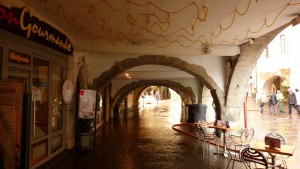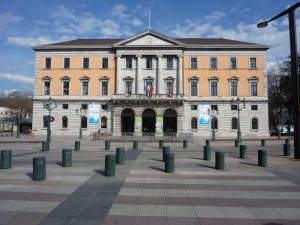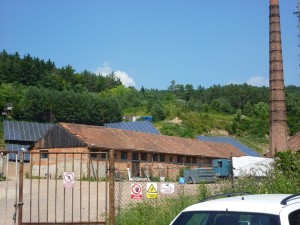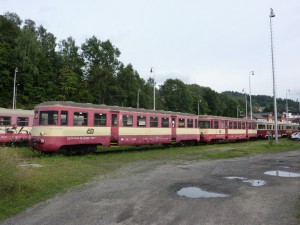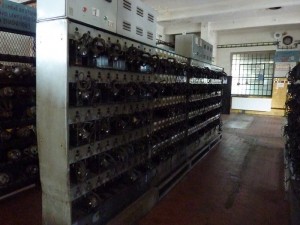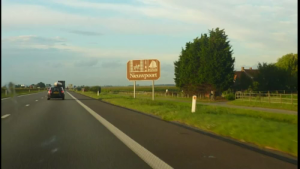Annecy was built on the banks of the River Thiou, where the water flows out of Lake Annecy. It has been canalised for centuries now and surrounds the Palais de l’Isle, an old prison dating from the 12th century. It has become a symbol of Annecy and one of the most photographed sites in France. The lake is very clean, as it is supplied with plentiful clean water from a spring, which accounts for 30% of the fresh water, plus of course all of the melt water from the winter snow. In summer, the lake temperature gets up to 24 degrees Celsius and the lake has many beaches, where swimmers can enjoy the lake. I was there in the spring and the lake many of the sightseeing cruises had restarted.
Fishing in Lake Annecy
Landing stage at Lake Annecy
Palais de l’Isle, cleaning the canal on left
Cleaning the canal
They even wash down after the Weekly Market
There are many beautiful shops and cafés on the banks of the river
Annecy Chateau
Eglise St Maurice
Town Hall, with 2018 Winter Olympic bid posters
I have visited Annecy twice this year (2010), once as my direct train to Chamonix was cancelled due to strike action and I had a two hour wait there. The second time as I wanted a return visit. That must say something about the power of attraction the town has.






